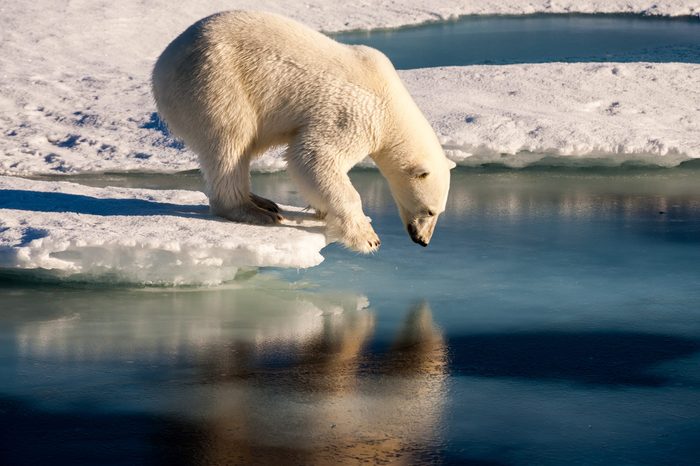
Polar bears in trouble
As the Guardian and other outlets reported this past year, receding sea ice, shorter icy periods, and general Arctic warming have led to dire conditions for these denizens of the far North. They’re losing the ice on which they hunt, on which they raise their cubs, on which they hibernate, and to which they are very specifically and distinctly suited in every way. As a result, some of their populations are dwindling and others are seeing many in their ranks go hungry as they try, miserably, to adapt. How to help: you can start by signing Polar Bears International’s petitions on behalf of both the bears and the ice. Meanwhile, let these amazing photos cause a twinge to your heartstrings.
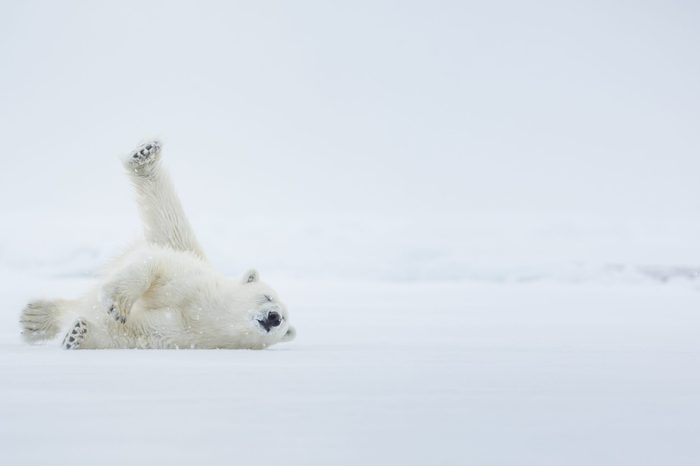
Taking a load off
Given the opportunity to live a regular old day during a regular old Arctic winter, a polar bear will take a nap on the ice, especially after eating a tasty seal, according to Polar Bears International. Naps are a critical part of a polar bear’s daily habit; they let him conserve much-needed energy for hunting and staying warm in frigid temperatures.
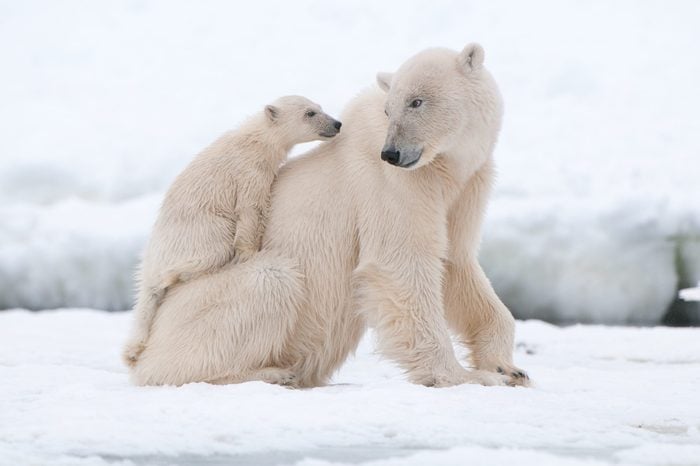
Sticking close to mom
Receding ice and all the challenges that brings to polar bears are hitting cubs especially hard. As Reuters reported back in 2011, with less ice to stand and hunt on, cubs are having to swim greater distances, which they lack the strength and stamina for. As a result, a study found that cubs required to swim greater distances had higher mortality rates than those that did not. Those rates are most certainly on the rise as more ice melts.
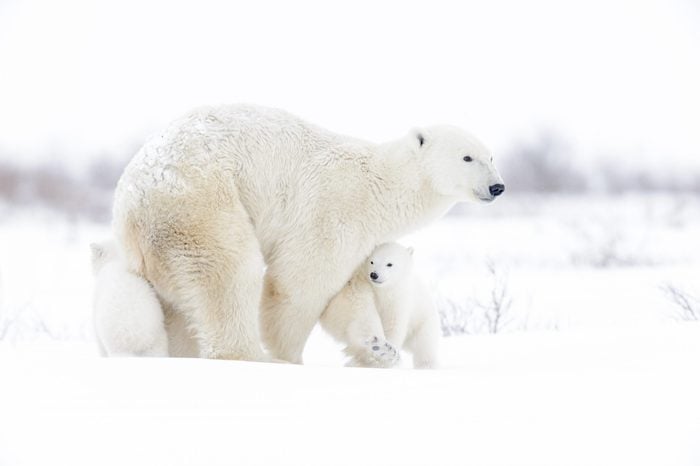
Future fierce fighter
Sure, this polar bear cub is the picture of adorableness as he snuggles with mom. But even at this young age, males play fight in order to hone their hunting and defense skills, according to WWF. Males are especially aggressive during breeding season and when they catch someone trying to steal their dinner (who wouldn’t be?). Learn about the penguin species that could disappear before the end of the century.
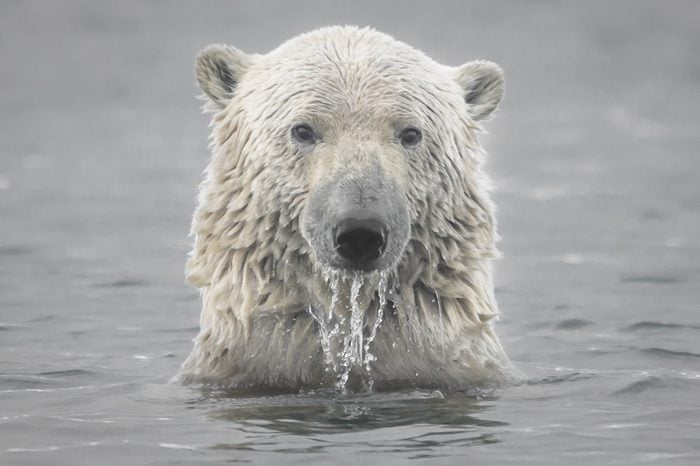
Keeping clean
An extremely important behavior for a polar bear is bathing. As Polar Bears International points out, getting the dirt and sticks out of their fur actually insulates them and helps them stay warm. Usually after feeding, they’ll take a dip and lick off their faces, chests, and paws, then shake off on top of the ice; they might also rub their bodies in the snow to clean up. See if you can spot the animals camouflaged in these 17 photos.
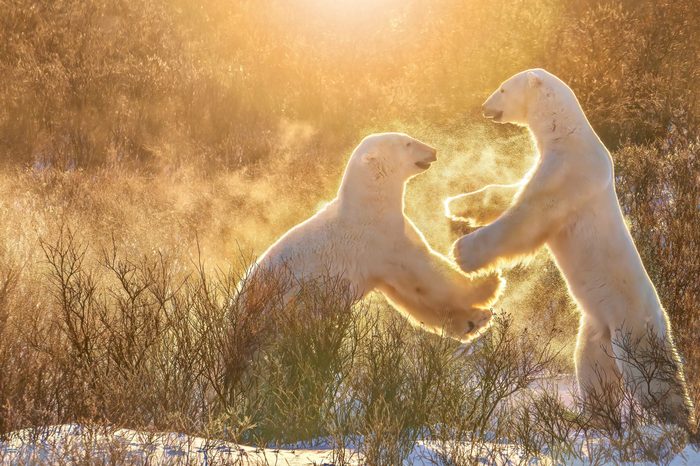
Ready to play
Yes, standing on your hind legs can be useful for surveying the tundra for a bite to eat. But it’s also a behavior that polar bears engage in when they’re ready to play—normally with their paws at their sides and their chins lowered to their chests, says the Ocean Conservancy.
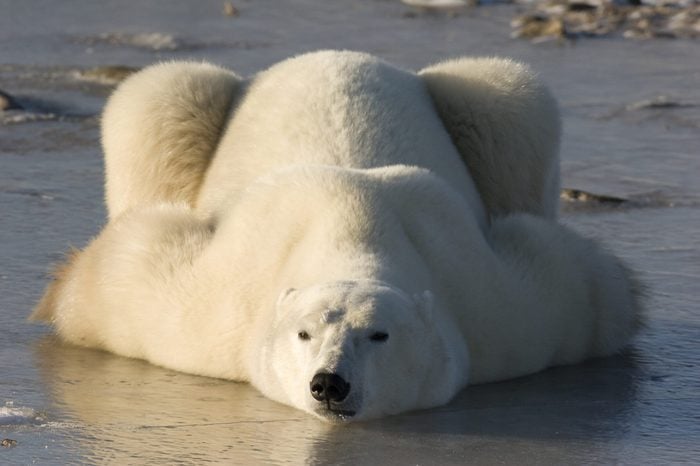
Dining on ice
We can’t stress it enough: Polar bears are at home on the ice, and ice makes their way of life possible. And while, yes, hunting seals is one of the prime benefits to bears of an icy Arctic, a recent study found that the ice is the source of an unexpected necessity, reports National Geographic. It contains calories in the form of sea ice algae, which researchers now believe provide some 70 percent of nutrients that at least three sub-populations of polar bears rely on n order to thrive.
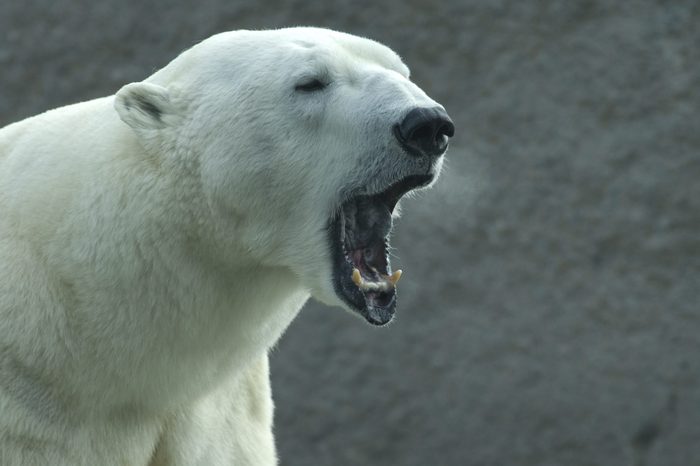
Call of the wild
Like the rest of us, polar bears communicate with sound. They’ll hiss and snort when they’re spoiling for a fight. A mother bear will give a low growl when she’s scolding a cub. A deep growl means beware, while a loud roar means a bear is mightily angry. Step waaay back if you hear it; polar bears can kill prey twice their size.
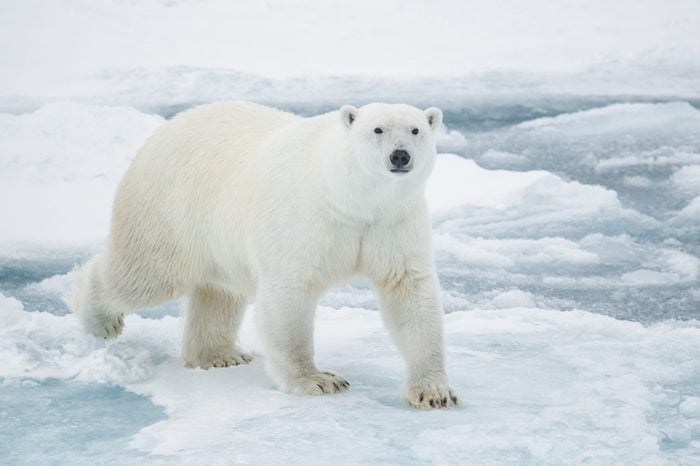
Body language
Polar bears also give off lots of non-vocal, physical cues about what they’re feeling. A playful mood is signified by a bear wagging her head from side to side, a nose-to-nose touch is a form of polite greeting, while a rushing movement from a mother bear occurs when a male is threatening her cubs.
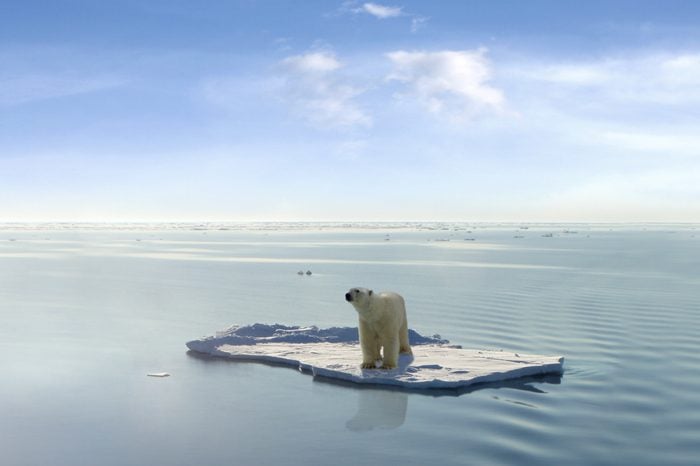
In a sea of blue
Here’s an artistic rendering at what could be in store for the future: a bear catching a ride on a skimpy ice floe. Polar bears rely heavily on sturdy and extensive sea ice in order to hunt prey and live their best lives. But with ice melting, that way of life is significantly threatened. Melting glaciers have serious repercussions for humans, too.
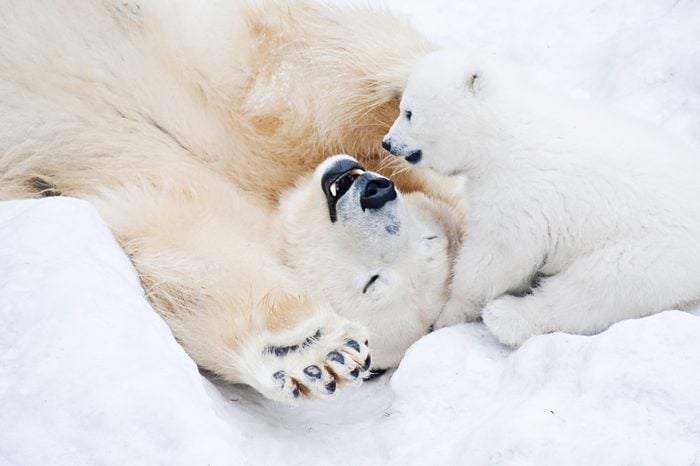
Playtime!
A mother polar bear gives birth for the first time when she’s 5 or 6 years old to one to three cubs (usually twins), in the month of November or December. She’s the sole caregiver to her fur babies. But her job’s not all hard work! These extremely intelligent animals have a playful side.
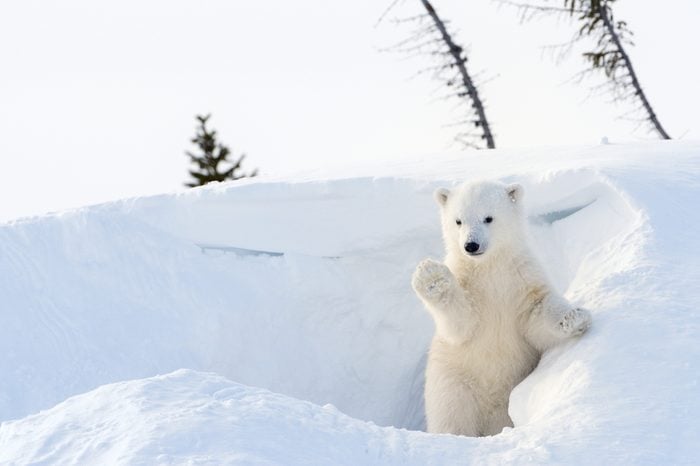
Out in the world
A polar bear mom gets ready to give birth by fattening up on seals, then digging a snow den in a drift; she hangs out in there until she gives birth a couple months later. She nurses her babies snuggled up inside, away from predators, where it can be 40 degrees warmer than it is outside. Sometime around March, the young bears are ready to emerge. If you could use a laugh, we think you’ll find these bear puns beary funny.
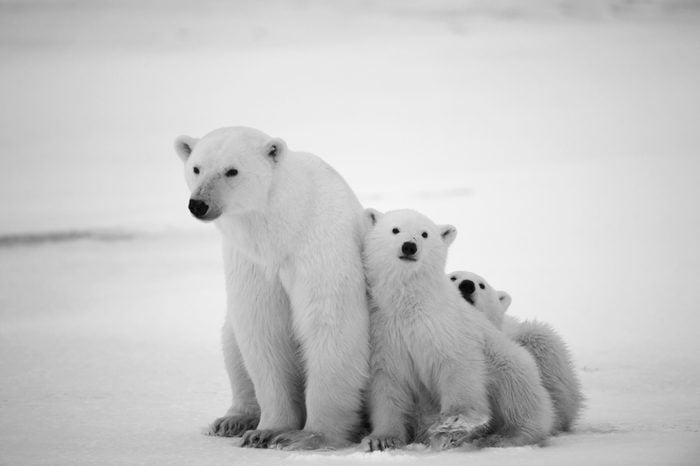
The family that sticks together stays warm together
The polar bear (Ursus maritimus) is one of only eight species of bear worldwide. Unlike its black and brown bear cousins, it thrives on the ice and snow—thanks to its special coat made of long hairs that stick together when wet to provide insulation and cause moisture to roll right off. It also has a second snuggly undercoat of fur and black skin that absorbs heat from the sun. Learn about 14 beautiful animals that could disappear in your lifetime.
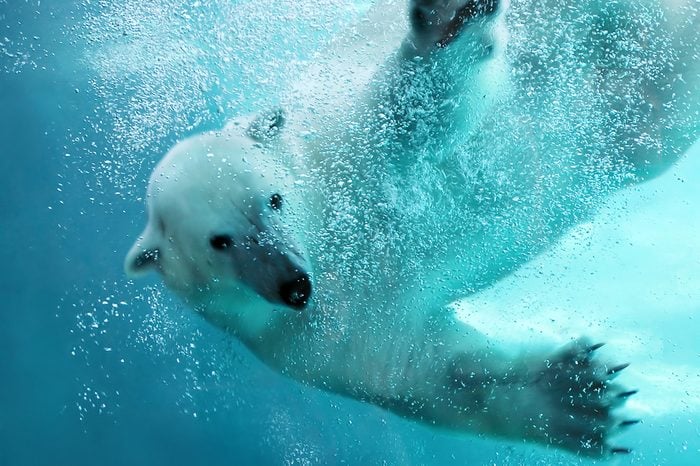
Into the water!
Polar bears are excellent swimmers. They can paddle up to 6 miles an hour, and travel as far as 60 miles, using their front paws to pull them through the water and their back paws as rudders. Their stores of fat keep them extra warm.
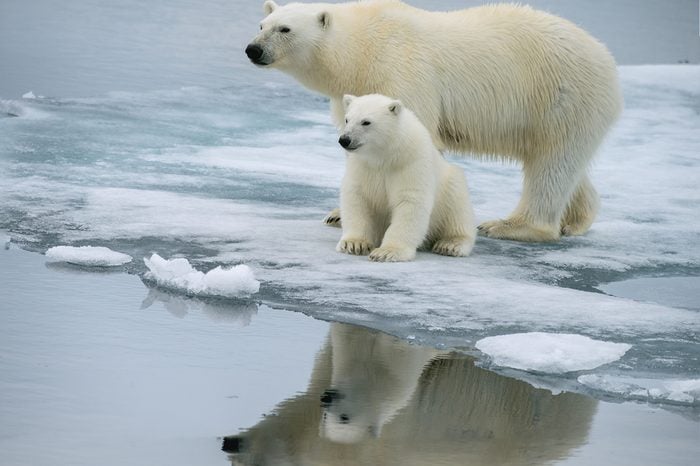
Adrift on the open sea
Polar bears may swim to stalk seals for their dinner, but mostly they hunt them from on top of the ice. These biggest of all land predators can sniff out their prey from 20 miles away; they can then stand for hours waiting for it to surface before grabbing it with their powerful paws and jaws. Here are 14 more adorable animals that are surprisingly dangerous.
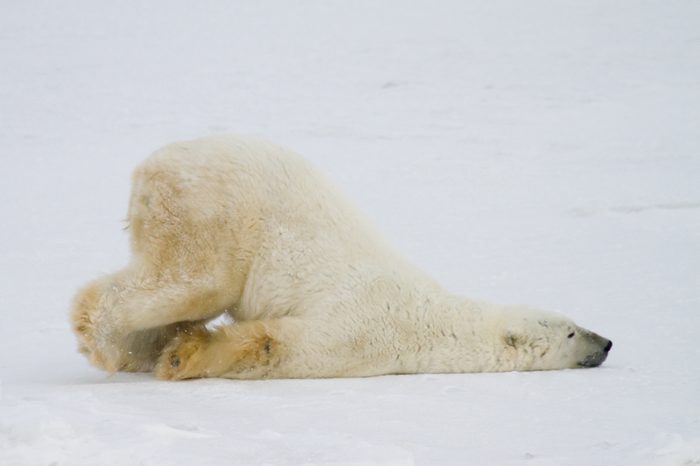
Bears just wanna have fun
According to the San Diego Zoo, playful solitary polar bears “have been observed sliding repeatedly downhill or across ice for no apparent reason other than just for the fun of it!” Imagine what they could do if someone gave them some sleds or skis!
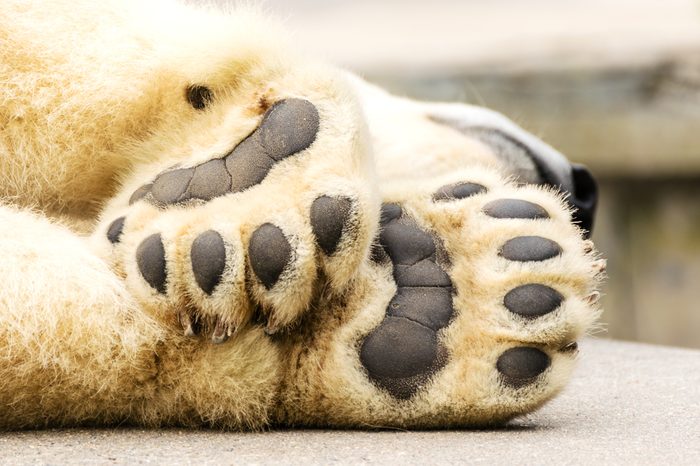
Amazing paws!
The paws of an adult polar bear can be 12 inches across. They’re not just big and beautiful, though; they’re highly specialized tools that allow the bears to grip the ice, dig their snow burrows, spear some seals, and walk across the tundra snowshoe-style without sinking. The thick, rough pads on the bottoms of their paws give them extra traction. Don’t miss these 11 endangered animals that are making a comeback.
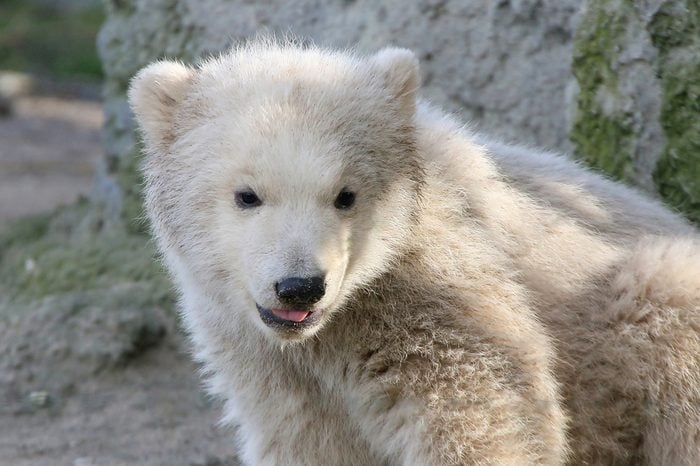
Baby steps
Baby polar bears start their lives at about 12 inches long and weighing around one pound. But lying in the warm den with their mothers for three months or longer, nursing on milk that is 33 percent fat, helps them grow up quick. This three-month-old cub could weigh 30-plus pounds and is now ready to watch its mother hunt for seals—and hopefully give it a little taste of the blubber. Here are more photos of baby wild animals that will brighten your day.
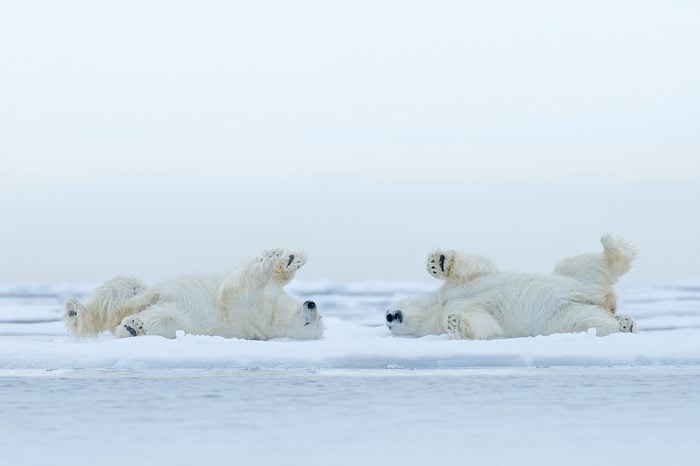
Pal-ing around
Even though they’re mostly solitary animals, grownup polar bears can form short- or long-lived friendships. How do they like to spend their time together? Wrestling, traveling together in order to hunt—and if this photo is any indication, showing each other their bellies!
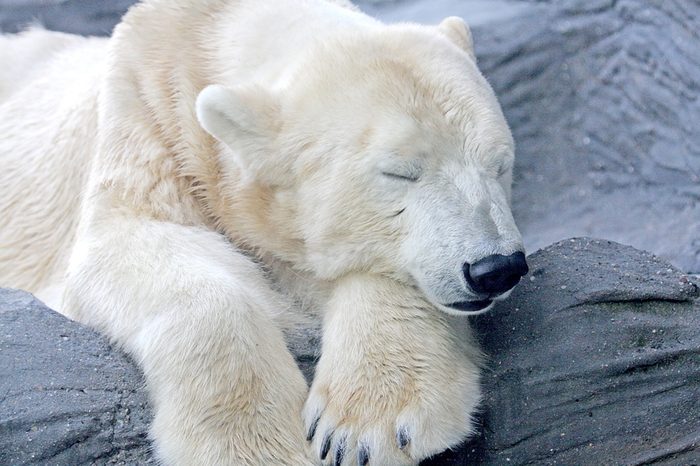
Shhhh…polar bear sleeping!
Unlike other bears, polar bears don’t hibernate for the winter. But that doesn’t mean they don’t like a good snooze, especially in the summertime, when they’ve been observed sleeping for up to 8 hours at a stretch. They may use a rock for a pillow; they might dig a shallow hole in the ground, or make a pile of seaweed, to be used as a “day bed.”
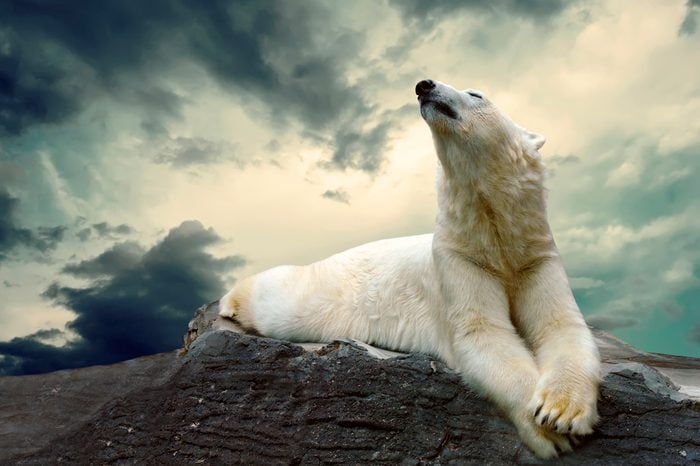
Take it easy
Hunting seals is exhausting work that can use up a polar bear’s fat and energy reserves, especially as the climate warms; they have to work harder to catch their prey in the fewer and fewer months in which there’s any ice to hunt on top of. Is it any wonder they may rest for up to 20 hours some days? Read about 11 animals you never knew were in danger of extinction.
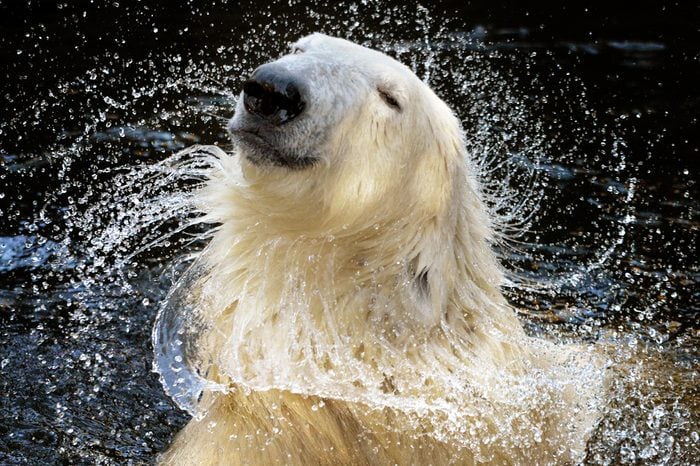
Hello, gorgeous!
Weren’t sure you loved polar bears? Then this glamor shot of a wet bear, post-swim, should change your mind forever! If you love these polar bear pictures, you definitely won’t want to miss these 15 adorable pictures of penguins we guarantee you’ll love.
